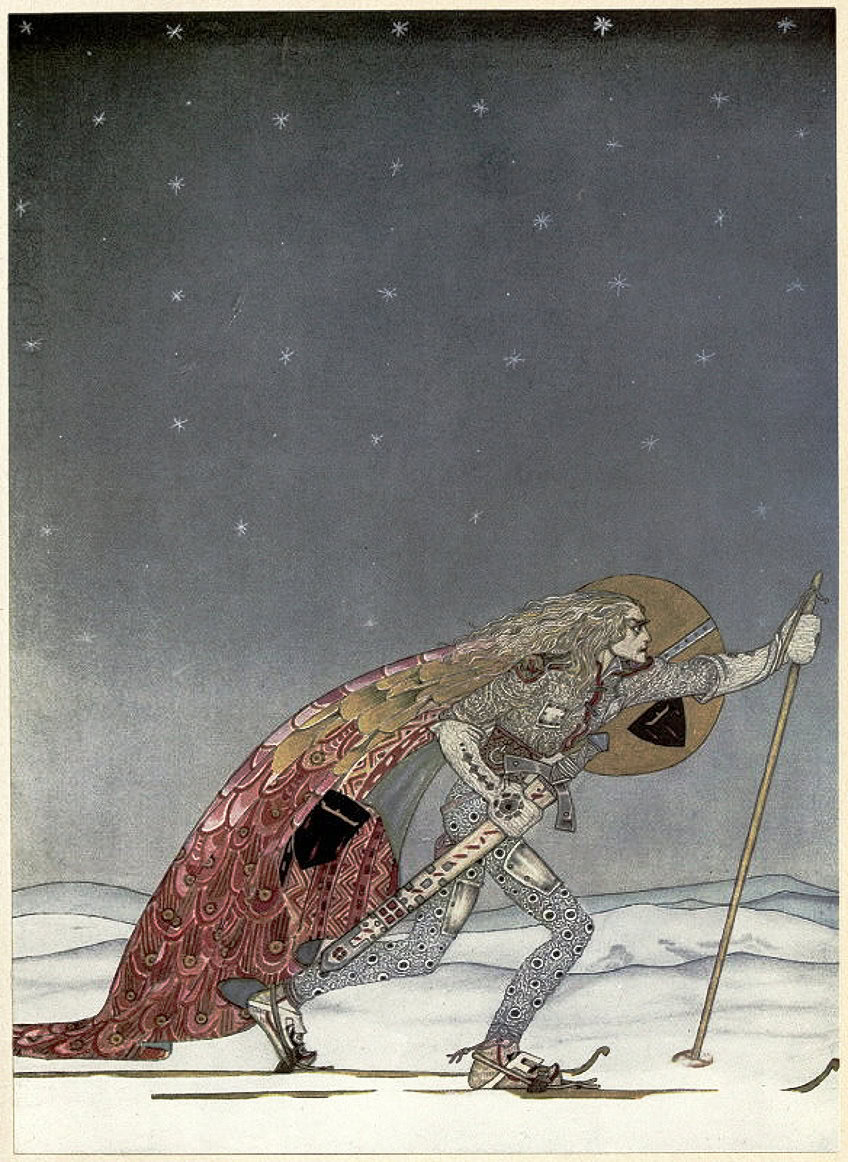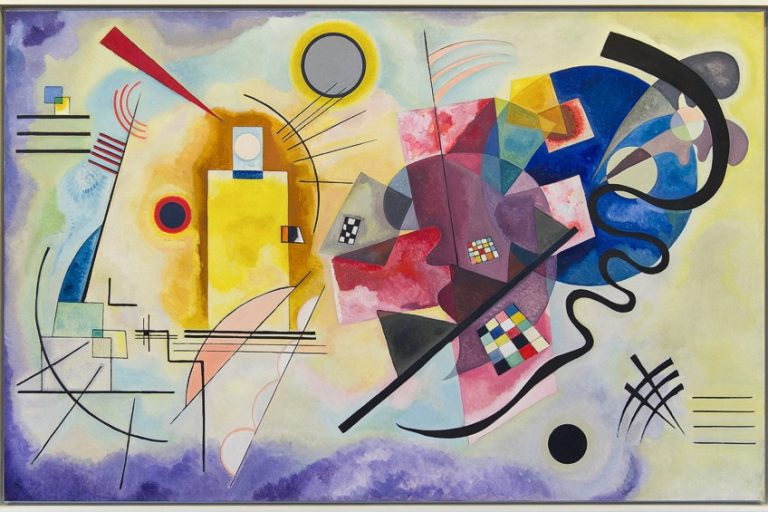Kay Nielsen – A Fairy Tale Visionary
Kay Nielsen, a Danish illustrator born in 1886, is celebrated for his enchanting and intricate artwork that captures the essence of fairy tales and folklore. Nielsen’s unique style, characterized by delicate lines, vibrant colors, and a dreamlike quality, has left an indelible mark on the world of illustration. His contributions to illustrated books, including East of the Sun and West of the Moon and The Twelve Dancing Princesses, showcase his mastery in bringing fantastical stories to life through captivating imagery. Nielsen’s legacy continues to inspire artists and storytellers, making him a timeless figure in the realm of art and imagination.
Key Takeaways
- Kay Nielsen was a prominent Danish illustrator known for his fairy tale illustrations.
- His art was part of the Golden Age of Illustration, blending Art Nouveau with his own style.
- Nielsen’s legacy includes significant work for Disney and influence on subsequent art and design.
Early Life and Artistic Training
| Birth | March 12, 1886 |
| Death | June 21, 1957 |
| Place of Birth | Copenhagen, Denmark |
| Genre of Work | Art Nouveau illustration |
Kay Nielsen was a Danish illustrator whose work left a substantial imprint on the art world, particularly in the domain of book illustration during the first half of the 20th century. His distinctive style, which blended influences from Art Nouveau with his unique vision, gave life to a multitude of fairy tales and stories, giving them a timeless and evocative visual representation. Nielsen’s ability to weave the fantastic with the real, through meticulously detailed and dramatic illustrations, established him as a notable figure in the Golden Age of Illustration.

His early life in Copenhagen set the stage for his artistic flair, honing his skills across various European art schools before embarking on a career that would encompass intricate illustrations for books such as East of the Sun and West of the Moon and collaborations with notable entities, including Disney. Whilst his time in Hollywood experienced ups and downs, his work for Disney’s Fantasia would become one of his most recognized contributions, leaving a legacy that continues to influence artists and enchant both young and old audiences alike.
Art Nouveau Influence and European Education
Nielsen’s illustrated works bear a significant influence from the Art Nouveau movement, characterized by its elegant lines and natural forms. This style blossomed in Europe as Nielsen pursued his artistic training, which he received at some of the most prestigious art institutions.
He studied first at Académie Julian and later at Académie Colarossi in Paris, centers known for nurturing creative talents and influencing many artists of the period including Arthur Rackham and Edmund Dulac, who were pioneers alongside Nielsen in the gift-book market.
Family Background and Initial Works
Born into an artistic family with both parents in the theatre industry—his father, Martinus Nielsen, a director, and his mother, Oda Nielsen, a celebrated actress—Kay Nielsen was steeped in the arts from an early age. The creative environment of his hometown, Copenhagen, coupled with the legacy of storytellers like Hans Christian Andersen, provided fertile ground for his initial works. Nielsen’s illustrations seamlessly wove the whimsical touch of fairy tales with the intricate stylings of Art Nouveau, leading him to become a central figure in the early-twentieth-century illustration community.

Major Works and Collaborations
The artistic contributions of Kay Nielsen are marked by enchanting fairy tale illustrations and significant collaborations that span both publishing and theatre. His work deeply influenced the visual language of early 20th-century storybooks and performances.
Iconic Fairy Tale Illustrations
Kay Nielsen is renowned for his distinctive and elaborate illustrations of fairy tales. His major works include intricate drawings for:
- In Powder and Crinoline (1913): A compilation of classic fairy tales, edited by Sir Arthur Quiller-Couch, illustrating narrative with a unique flair that became Nielsen’s hallmark.
- East of the Sun and West of the Moon (1914): A collection of Norwegian folktales, which was received with critical acclaim and showcased his mastery in blending art with storytelling.
These illustrations helped to cement Nielsen’s reputation as an extraordinary talent within the Golden Age of illustration.

Adventures in Publishing and Theatre
Nielsen’s artistic journey extended beyond book illustrations to involve collaborations in both publishing and theatre:
- Publishing: His association with publishers like Hodder and Stoughton facilitated the production of lavishly illustrated books, such as The Arabian Nights and Hansel and Gretel, which further expanded his audience and artistic influence.
- Theatre: Drawing on his parents’ background in the performing arts, Nielsen also contributed to stage designs at the Royal Danish Theater, merging his illustrative genius with the dynamic world of performance.
Throughout these endeavors, Kay Nielsen’s work not only enchanted audiences but also carved a niche for his creative legacy in the arts.
Hollywood Years and Disney Collaboration
Kay Nielsen’s involvement with Hollywood, and specifically with Disney, marked a significant period in his career where his distinctive style contributed to animated films that continue to be celebrated today.

Work on Fantasia and Other Projects
In the course of his time in California, Nielsen worked with Walt Disney Studios on a variety of projects. His most prominent contribution was to the 1940 animated film, Fantasia. Nielsen’s artistic vision played a crucial role in the Night on Bald Mountain sequence.
Notably, his detailed planning sketches lead to the creation of the iconic demon, Chernabog, a character that remains one of Disney’s most memorable villains.
Challenges and Artistic Impact
Despite Nielsen’s indisputable skill, his tenure at Disney was met with challenges. Adapting his intricate style to the demands of the animation industry of the time proved demanding. Nevertheless, Nielsen’s work left an indelible impact on the world of animation and fairytales. His unique perspective on storytelling through art continues to influence animators and artists, and his interpretation of fantastical elements has been integrated into various facets of Hollywood animation.

Legacy and Posthumous Recognition
Kay Nielsen’s enduring influence emanates from his unparalleled artistry and the continued reverence by institutions and enthusiasts alike. His death in 1957 marked the end of a pivotal chapter in the Golden Age of illustration, yet his legacy lives on through widespread posthumous recognition.
Exhibitions and Collections
One significant testament to Nielsen’s lasting legacy is the presence of his work in prestigious exhibitions. The Museum of Fine Arts, Boston, for instance, celebrated Nielsen with Kay Nielsen’s Enchanted Vision: The Kendra and Allan Daniel Collection, showcasing over 45 of his watercolors, drawings, and illustrated books. His works also grace collections globally, from New York to London, affirming his status as an esteemed illustrator across the arts community.

Influence on Modern Illustration
Nielsen’s unique illustration techniques and passion for storytelling have left a profound imprint on modern illustration. His intricate designs and the emotional depth of his characters have influenced contemporary artists, particularly in how they evoke fantasy and romance.
The stylized and expressive imagery used by Nielsen in projects like Everyman and Disney’s Sleeping Beauty continues to inspire illustrators and animators today.
Legacy of Kay Nielsen Today
Today, Kay Nielsen is remembered for his contributions to the reimagining of fairy tales and his collaboration with influential figures such as Johannes Poulsen. His love for the dramatic and the fantastical, coupled with his innovative techniques, continue to captivate audiences. Nielsen’s work is a touchstone for both the appreciation of classic illustration and the pursuit of artistic excellence in the modern era.

Kay Nielsen’s artistic legacy extends far beyond his lifetime, leaving a lasting impact on the world of illustration and storytelling. His ability to weave enchanting narratives through intricate and mesmerizing artwork has made him a beloved figure among art enthusiasts and fairy tale aficionados alike. Nielsen’s timeless illustrations continue to inspire new generations of artists, reminding us of the enduring power of imagination and creativity in bringing stories to life. As we delve into his mesmerizing illustrations, we are transported to magical realms where dreams and reality intertwine, showcasing Nielsen’s unparalleled talent and everlasting influence in the realm of art.
Frequently Asked Questions
What Type of Artwork Is Kay Nielsen Known For?
Kay Nielsen is celebrated for his captivating book illustrations. His work, characterized by its luminous and dramatic style, often depicts enchanting scenes from classic fairy tales, incorporating a distinctive blend of Art Nouveau and Orientalism.
Which Famous Fairy Tales Did Kay Nielsen Illustrate?
Nielsen’s illustrations grace the pages of several notable fairy tales, including East of the Sun and West of the Moon, a collection of Norwegian folktales. He also famously illustrated other classic stories such as Hans Christian Andersen’s fairy tales.
What Was Kay Nielsen’s Contribution to Disney?
Kay Nielsen contributed his artistry to the Walt Disney Company, where his most memorable work is the Night on Bald Mountain sequence in the 1940 animated film, Fantasia. Initially, he was involved in developing storyboards for Wagner’s The Ride of the Valkyries, an intended segment for a future version of the film.
Isabella studied at the University of Cape Town in South Africa and graduated with a Bachelor of Arts majoring in English Literature & Language and Psychology. Throughout her undergraduate years, she took Art History as an additional subject and absolutely loved it. Building on from her art history knowledge that began in high school, art has always been a particular area of fascination for her. From learning about artworks previously unknown to her, or sharpening her existing understanding of specific works, the ability to continue learning within this interesting sphere excites her greatly.
Her focal points of interest in art history encompass profiling specific artists and art movements, as it is these areas where she is able to really dig deep into the rich narrative of the art world. Additionally, she particularly enjoys exploring the different artistic styles of the 20th century, as well as the important impact that female artists have had on the development of art history.
Learn more about Isabella Meyer and the Art in Context Team.
Cite this Article
Isabella, Meyer, “Kay Nielsen – A Fairy Tale Visionary.” Art in Context. May 20, 2024. URL: https://artincontext.org/kay-nielsen/
Meyer, I. (2024, 20 May). Kay Nielsen – A Fairy Tale Visionary. Art in Context. https://artincontext.org/kay-nielsen/
Meyer, Isabella. “Kay Nielsen – A Fairy Tale Visionary.” Art in Context, May 20, 2024. https://artincontext.org/kay-nielsen/.











